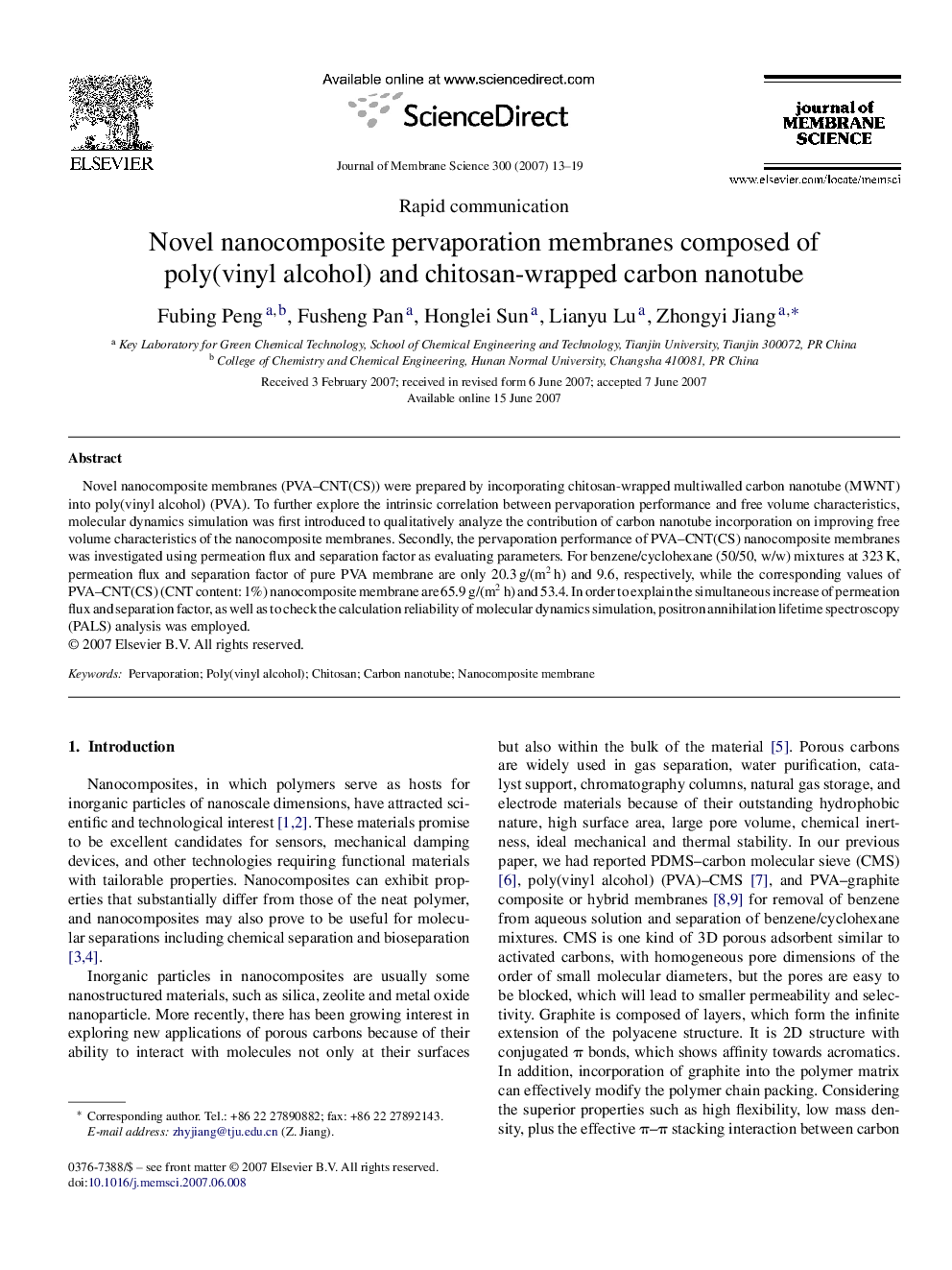| Article ID | Journal | Published Year | Pages | File Type |
|---|---|---|---|---|
| 638433 | Journal of Membrane Science | 2007 | 7 Pages |
Novel nanocomposite membranes (PVA–CNT(CS)) were prepared by incorporating chitosan-wrapped multiwalled carbon nanotube (MWNT) into poly(vinyl alcohol) (PVA). To further explore the intrinsic correlation between pervaporation performance and free volume characteristics, molecular dynamics simulation was first introduced to qualitatively analyze the contribution of carbon nanotube incorporation on improving free volume characteristics of the nanocomposite membranes. Secondly, the pervaporation performance of PVA–CNT(CS) nanocomposite membranes was investigated using permeation flux and separation factor as evaluating parameters. For benzene/cyclohexane (50/50, w/w) mixtures at 323 K, permeation flux and separation factor of pure PVA membrane are only 20.3 g/(m2 h) and 9.6, respectively, while the corresponding values of PVA–CNT(CS) (CNT content: 1%) nanocomposite membrane are 65.9 g/(m2 h) and 53.4. In order to explain the simultaneous increase of permeation flux and separation factor, as well as to check the calculation reliability of molecular dynamics simulation, positron annihilation lifetime spectroscopy (PALS) analysis was employed.
